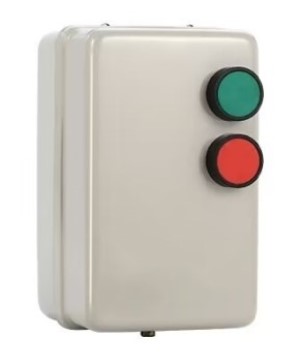How Does Magnetic Starter Work?
A magnetic starter is a device that uses magnetic field force to start an engine. Its operation principle is based on electromagnetic induction and magnetic interaction. It typically consists of two main parts: an electromagnetic coil and a permanent magnet.
Electromagnetic Coil: The electromagnetic coil is a coil of wire wound in a spiral shape, installed near the engine and usually connected to the engine's flywheel. When current passes through it, the electromagnetic coil generates a magnetic field inside it, the size and direction of which depend on the magnitude and direction of the current flow.
Permanent Magnet: The permanent magnet is a magnetic material with a constant magnetic field, typically a magnet or similar material. This permanent magnet is installed inside the magnetic starter, near the electromagnetic coil.
Working Process
- Start Process Begins: When starting the engine, the current in the starting circuit is sent to the electromagnetic coil. This current activates the electromagnetic coil, causing it to generate a strong magnetic field inside it, the size and direction of which are determined by the magnitude and direction of the current flow.

- Magnetic Field Interaction: Since the electromagnetic coil produces a magnetic field, it interacts with the magnetic field of the permanent magnet. According to the Lorentz force principle, when two magnetic fields interact, they produce a force, causing the permanent magnet to experience attraction or repulsion.
- Attraction of the Permanent Magnet: Due to the interaction between the magnetic field of the electromagnetic coil and the permanent magnet, the magnetic field of the electromagnetic coil attracts the permanent magnet toward it, typically moving it toward one end of the electromagnetic coil. This process is similar to bringing two magnets close together; they attract each other.
- Connection to the Engine: After being attracted to the vicinity of the electromagnetic coil, the permanent magnet is connected to the engine's flywheel. The flywheel is a component that rotates the engine. By connecting the permanent magnet, the engine's motion starts to rotate.
- Engine Starting: Once the engine starts to rotate, other systems such as the fuel and ignition systems start working, and the engine can run by itself.
- Stop the Magnetic Field: Once the engine is started, the current is cut off, causing the magnetic field of the electromagnetic coil to disappear. Therefore, the permanent magnet is no longer subject to attraction, and it moves away from the electromagnetic coil and returns to its initial position.
In this way, the magnetic starter uses electromagnetic induction and magnetic interaction to convert electrical energy into mechanical energy, thereby starting the engine. Compared to traditional starters, magnetic starters are typically more lightweight, reliable, and have higher starting torque, making them widely used in many automotive and other mechanical devices.
Advantages
Here are a few advantages that magnetic starters have over traditional starters. First, they are known for their reliability due to fewer moving parts, reducing the likelihood of failure caused by wear and tear. Additionally, the absence of mechanical contacts decreases the risk of sparking, leading to a longer lifespan. Magnetic starters also provide higher starting torque compared to mechanical starters, particularly beneficial in cold weather or heavy load conditions.
Furthermore, magnetic starters feature a compact design, making them easier to install and integrate into various systems, including automotive applications with limited space. Their simpler design and fewer moving parts result in reduced maintenance requirements, leading to lower costs and less downtime for servicing. Additionally, magnetic starters often include safety features such as overload and thermal protection, preventing damage to the motor and surrounding equipment.
Overall, magnetic starters offer a combination of reliability, performance, safety, and efficiency, making them a preferred choice for starting engines and motors in various applications.

